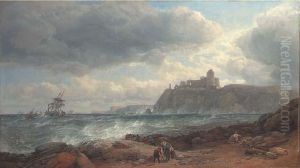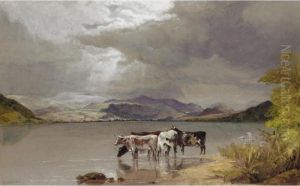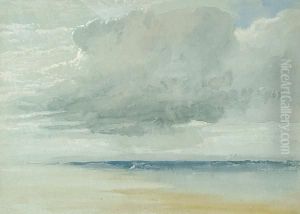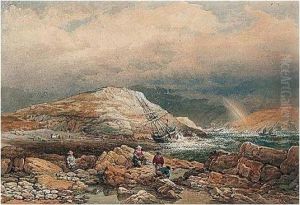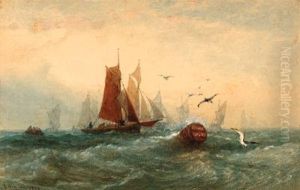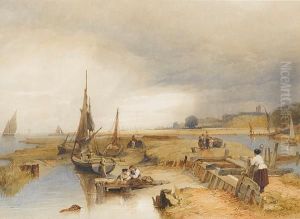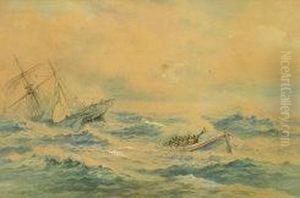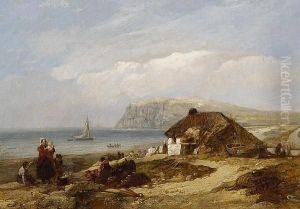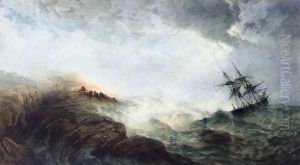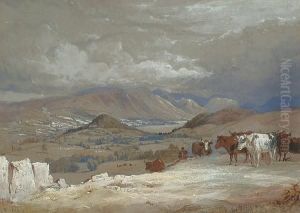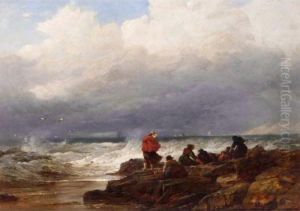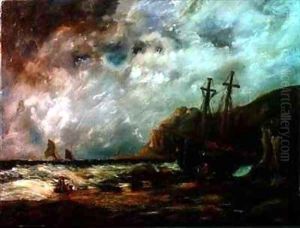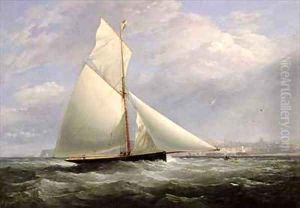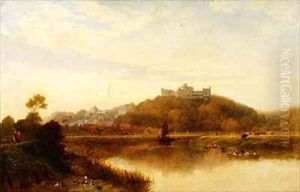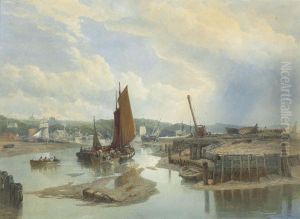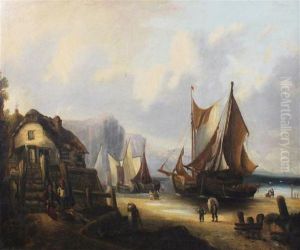Edward Duncan Paintings
Edward Duncan was a prolific English watercolour artist known for his marine and coastal scenes. Born in 1803 in London, Duncan began his artistic career as an apprentice to the renowned engraver Robert Havell, where he honed his skills in engraving. However, he eventually found his true passion in watercolor painting.
During his lifetime, Duncan became associated with the Royal Society of Painters in Water Colours, which was established to promote watercolor as a complete form of art on its own. He exhibited regularly at the Royal Academy and other prominent galleries, gaining recognition for his detailed and atmospheric depictions of the British coastline, as well as maritime activities.
Duncan's works were celebrated for their precision and vibrancy, often capturing the dynamic interplay of light and water. He had the ability to convey a sense of movement and mood in his paintings, which ranged from calm coastal scenes to the more turbulent seascapes. His attention to detail extended to the ships and boats that featured prominently in his work, showcasing his knowledge of maritime craft and rigging.
Throughout his career, Duncan also contributed to illustrated books and periodicals, where his engravings and paintings reached a wider audience. Despite facing competition from the rising popularity of photography, his work remained sought after by collectors and the public.
Edward Duncan passed away in 1882, leaving behind a legacy as one of the notable English watercolorists of the 19th century. His artworks continue to be appreciated for their historical value and artistic merit, capturing a bygone era of maritime life with beauty and authenticity.
